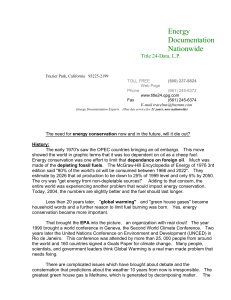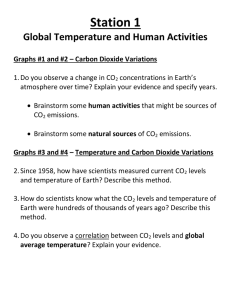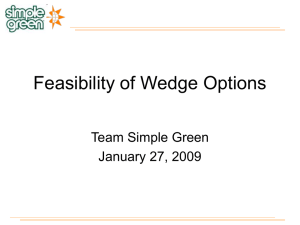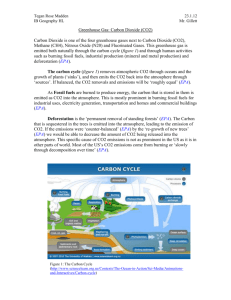Practice comparing groups: carbon dioxide
advertisement
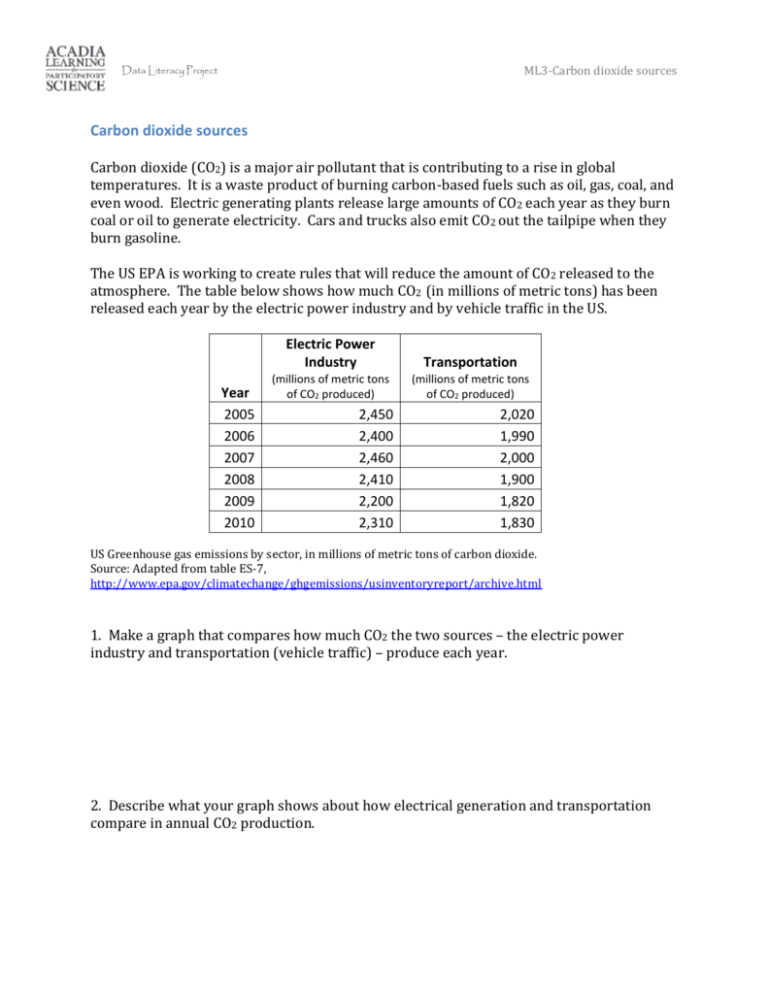
ML3-Carbon dioxide sources Data Literacy Project Carbon dioxide sources Carbon dioxide (CO2) is a major air pollutant that is contributing to a rise in global temperatures. It is a waste product of burning carbon-based fuels such as oil, gas, coal, and even wood. Electric generating plants release large amounts of CO2 each year as they burn coal or oil to generate electricity. Cars and trucks also emit CO2 out the tailpipe when they burn gasoline. The US EPA is working to create rules that will reduce the amount of CO2 released to the atmosphere. The table below shows how much CO2 (in millions of metric tons) has been released each year by the electric power industry and by vehicle traffic in the US. Year 2005 2006 2007 2008 2009 2010 Electric Power Industry Transportation (millions of metric tons of CO2 produced) (millions of metric tons of CO2 produced) 2,450 2,400 2,460 2,410 2,200 2,310 2,020 1,990 2,000 1,900 1,820 1,830 US Greenhouse gas emissions by sector, in millions of metric tons of carbon dioxide. Source: Adapted from table ES-7, http://www.epa.gov/climatechange/ghgemissions/usinventoryreport/archive.html 1. Make a graph that compares how much CO2 the two sources – the electric power industry and transportation (vehicle traffic) – produce each year. 2. Describe what your graph shows about how electrical generation and transportation compare in annual CO2 production. ML3-Carbon dioxide sources Teaching notes Chemistry Env. Science Compare groups While this is set up as a “compare groups” question, students might also answer the question as a time series because the data are given for a sequence of consecutive years. A comparison can also be described between two time series – either approach would be acceptable. Here are box plots, dot plots, and a line graph for the data set. The important thing is that however the students chose to graph the data, (1) the data are plotted accurately and (2) their explanation is supported by (is consistent with) the graph they drew. For extended discussion: 1. Which sector (source) of carbon dioxide would it make the most sense for the EPA to regulate first? 2. How is each sector changing through time? 3. How has each sector been changing since 2010? (Requires retrieving more current data).






